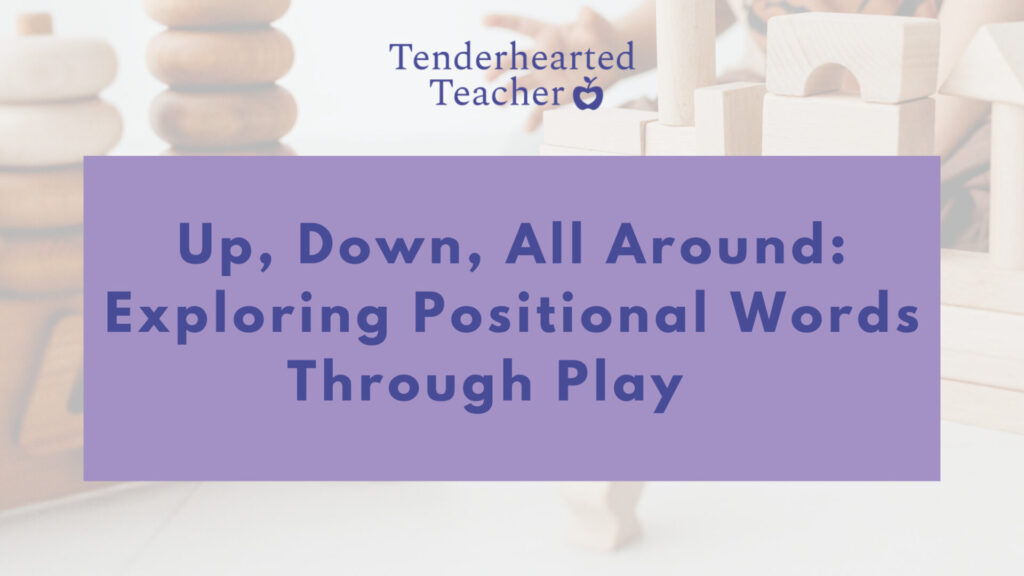
“Look behind you.” “Is it under your desk?” “Put this in your lunchbox.” As a parent, you probably use prepositions (or positional words) like these countless times throughout the day without even realizing it. But did you know that using this type of spatial language not only helps your child build their vocabulary but also their early math skills? Stick around to find out more.
Please note: This post may contain affiliate links. As an Amazon Associate I earn from qualifying purchases. Therefore, if you buy something through these links I will receive a small commission at no extra cost to you. Thank you for your support.
What Are Positional Words?
According to Walden University, a positional word or preposition “is a word or group of words used before a noun, pronoun, or noun phrase to show direction, time, place, location, spatial relationships, or to introduce an object. Some examples of prepositions are words like “in,” “at,” “on,” “of,” and “to.’”
Why is Teaching Positional Words to Preschoolers So Important?
We use these types of words frequently in our everyday lives. They help us communicate with each other. Additionally, they help children make sense of the world around them. In fact, children begin learning simple prepositions during toddlerhood. For example, the words “in” and “on” are commonly used when interacting with young children.
“Put your cup on the table.”
“Let’s read the book in bed.”
Knowledge of these words is also valuable in a classroom setting once a child enters preschool. A good grasp on spatial language helps children understand and follow directions, i.e. “line up behind your classmate”, “find the paper inside of your folder.” This in turn, makes it easier for children to navigate their classroom environments as well as participate in daily activities and routines.
How are Positional Words Connected to Early Math?
Positional words relate to geometry and spatial sense (or the understanding of space and shapes) which is one of the 5 areas of early math learning. According to STEP Math, the five areas are:
- Numeracy
- Operations
- Geometry and spatial sense
- Patterning
- Measurement
The organization notes that at the preschool level geometry and spatial sense, in particular, is all about children understanding shapes and their properties. They state, “It’s not just about identifying shapes in an isolated way, but really seeing how they connect to the physical world we live in. Furthermore, “spatial sense is about helping children develop an understanding of an object’s position and its relation to other objects.”
Research has shown that this type of early math knowledge can lead to future achievement. The Development and Research in Early Math Education(DREME) Network states, “Spatial knowledge and language predict future academic performance. Those children who acquire a solid understanding of space and spatial language tend to demonstrate higher math achievement than students who do not achieve such mastery.”
So What Can We Do To Teach These Concepts?
You might think teaching your child positional words requires worksheets. But, you want to focus on activities that are more interactive and hands-on instead. For example, you want to try exercises that require a child’s body movement. These are more likely to be effective for geometric concepts like this.
Here are some of my favorite fun and age-appropriate ways to teach prepositions. I like to use games and props, books, and music!
Additionally, you want to incorporate this vocabulary into your everyday routines and play activities. Fill out the form below to download my free printable flashcard set to help you and your child practice common prepositions at home.
1. Games & Props
Hide the Toy Game:
Place your child’s favorite toys throughout your home. (My toddler likes to use mini-dinosaurs for this!) Then, give directional clues like “Find the dinosaur near the couch” and “Find the dinosaur under the pillow.” After you’ve done several rounds, you can have your child hide them and then give you verbal directions.
Flashlight Fun Game:
Turn down the lights. Give your child a small flashlight. Then give them directions to shine the light in different areas of the room. “Shine the light over your bed”, “Shine the light inside the closet”, etc. This game is such a favorite in our house that it’s become part of our daily bedtime routine. Here’s the flashlight we use. It’s multi-purpose because you can practice positional words while also learning about the planets!
- Slide a reel in and discover the happy visitors from another galaxy
- Slide another reel and discover the cool planets from our solar system
- Easy-to-grip handle with a storage space that holds the reels
- A user-friendly flashlight that makes everything cosmic and bright
Obstacle Courses:
Take advantage of your environment to create an obstacle course. If you’re at your local park, give your child directions to follow. “Climb up the ladder”, “Go through the tunnel”, and “Jump over the ball”, etc. You can also do this activity in your own home by setting up blankets, pillows, etc. to form a course.
Box and Props
If your child is anything like mine, they can spend endless amounts of time playing with boxes and containers. You can use those moments to practice their spatial language. Take an empty box or container plus your child’s favorite toy or stuffed animal. Then, give them directions to follow to place their toy in the correct position, i.e. “Put the teddy bear on top of the box”, or “Hide the bear inside the box.”
2. Music Videos
“The Bear Hunt Song” by The Learning Station and “All Around the Farm” by Jack Hartmann are two great songs for spatial language.
3. Books
These three books are a few of my favorites for teaching common prepositions at home and in the classroom!
- Rosie’s Walk by Pat Hutchins
- A Parade of Elephants by Kevin Henkes
- In Between Things by Priscilla Tey
Conclusion
Knowing how to use prepositions correctly is important for children because it cultivates a deeper understanding of space, location, and the world around them. As adults, we can have a long-lasting impact on our child’s overall math knowledge and achievement just by making a concerted effort to incorporate these concepts into our daily routines and lives.
I’ll leave you with this quote from Herbert P. Ginsburg and Colleen Oppenzato (DREME Network):
“Although their everyday spatial ideas are often useful (as in the case of moving around familiar surroundings) and sometimes surprisingly powerful (as in the case of complex symmetries), young children still have a great deal to learn and need adults to help them move forward. Teachers and parents can build upon and extend what young children already know about space. Adults can help young children mathematize their everyday ideas of space. This involves using language and various representations to describe and understand spatial ideas.”
If you’d like to learn how to teach your child other early math concepts, check here to read my post about teaching math using building blocks.
Now talk to me! Do you have any tips for teaching children about prepositions? Comment below!
RESOURCES: Ginsburg, H. P., & Oppenzato, C. (2022). Spatial relations. What Children Know and Need to Learn about Shape and Space | DREME TE. Retrieved October 5, 2022, from https://prek-math-te.stanford.edu/spatial-relations/what-children-know-and-need-learn-about-shape-and-space University of Virginia: The Center for Advanced Study of Teaching and Learning (CASTL). (2018). The five areas of early math. STEP Math - Supporting Teachers to Enhance their Practice. Retrieved October 5, 2022, from http://www.steplearning.org/how/areas.php#:~:text=Children's%20early%20math%20learning%20happens,travel%20to%20achieve%20those%20skills.
SAVE TO PINTEREST
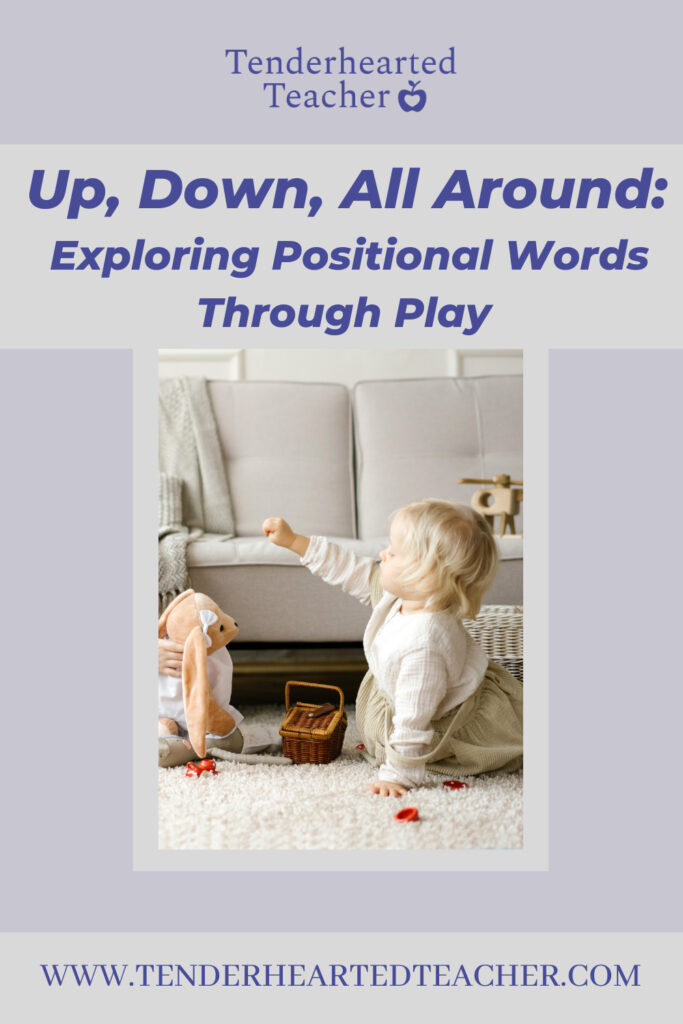

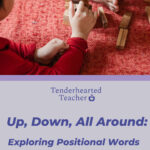
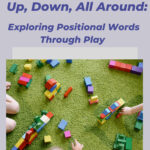
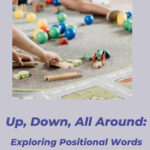
Great info! Loved it!
I don’t have kids but am an aunt to a few preschool age children – definitely forwarding this info along to parents! Very helpful!
Very helpful and insightful!
I work with toddler two’s and this was a very good help for me as this week is spatial relations
I’m so glad this was helpful for you and your students, Tanesha. Thanks for your comment. Have a great day.